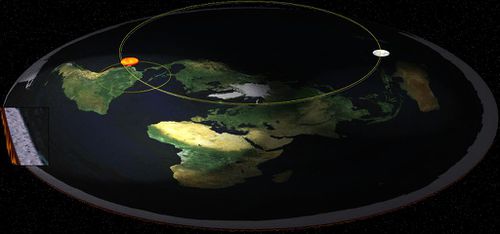Difference between revisions of "Sun"
From The Flat Earth Wiki
Tom Bishop (talk | contribs) (→Topics) |
Tom Bishop (talk | contribs) (→Topics) |
||
| Line 4: | Line 4: | ||
*[[Sunrise and Sunset]] | *[[Sunrise and Sunset]] | ||
| − | *[[Electromagnetic Acceleration]] | + | :*[[Electromagnetic Acceleration]] |
| − | *[[Magnification of the Sun at Sunset]], or how the sun maintains its size throughout the day. | + | :*[[Magnification of the Sun at Sunset]], or how the sun maintains its size throughout the day. |
| − | *The [[Equinox]] | + | :*The [[Equinox]] |
*[[Temperature Variations]] of sunlight | *[[Temperature Variations]] of sunlight | ||
*[[Distance to the Sun]] | *[[Distance to the Sun]] | ||
Revision as of 00:58, 3 August 2019
 The sun is a revolving sphere. It has a diameter of 32 miles and is located approximately 3000 miles above the surface of the earth.
The sun is a revolving sphere. It has a diameter of 32 miles and is located approximately 3000 miles above the surface of the earth.
Topics
- Electromagnetic Acceleration
- Magnification of the Sun at Sunset, or how the sun maintains its size throughout the day.
- The Equinox
- Temperature Variations of sunlight
- Distance to the Sun
- The Seasons
- Clouds Lit From Below
Spotlight effect
The Sun's area of light is limited to an elliptic area of light upon the earth much like the light of a lighthouse is limited to a finite area around it. The rotating light on a lighthouse does not propagate infinitely into the distance. This means that only certain portions of the Earth are lightened at a time. It also describes how night and day arise on a Flat Earth. The apparent view of rising and setting are caused by perspective, just as a flock of birds overhead will descend into the horizon as they fly into the distance.

